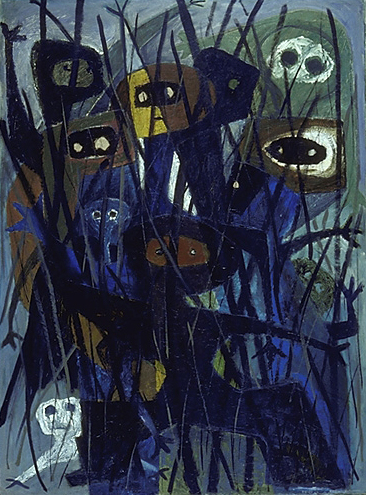Alexander Phimister Proctor, sculptor, painter (b in Bosanquet Twp, Lambton Co, Ont 27 Sept 1860; d at Palo Alto, Calif 5 Sept 1950). Proctor's family left Canada in 1866, settling in Denver, Colorado, in 1871. There young Proctor developed a lifelong love of western American frontier life, animals and hunting. He would be nominated a member of the big game hunting club, the Boone and Crockett, by Theodore Roosevelt in 1893.
He studied at the National Academy of Design and Art Students League in New York (1886-91), realized several monumental sculptures for the World's Columbian Exposition in Chicago (1891-93), then studied at the Académie Julian in Paris under Denys Puech. He returned to New York in 1894 to prepare horses for 2 equestrian monuments by Augustus St Gaudens - General John A. Logan for Chicago and General W.T. Sherman for New York - and was commissioned to do 2 standing puma for Prospect Park, Brooklyn, NY, realized on his return to Paris in 1896.
Proctor sculpted a monumental quadriga for the American pavilion at the 1900 Paris Exposition and several works for the Pan-American Exposition in Buffalo, and on both occasions was awarded a gold medal. In 1903 he sculpted 4 lions for the McKinley Monument in Buffalo and in 1909 2 tigers for Nassau Hall at Princeton University.
Romantic and heroic in concept, Proctor's naturalistic sculptures were based on a detailed knowledge of his subjects derived from experience. He sketched and hunted in Colorado, Montana, Washington, British Columbia and Alberta, in the latter province with Edmund Morris in 1909 and 1910, and he was a member of the Canadian Art Club from 1909 to 1915. Proctor realized numerous monuments for cities in Washington, DC, Colorado, Oregon, Missouri and Texas, including Theodore Roosevelt (The Rough Rider) for Portland (1917-24) and General Robert E. Lee for Dallas (1927-36).

 Share on Facebook
Share on Facebook Share on X
Share on X Share by Email
Share by Email Share on Google Classroom
Share on Google Classroom

